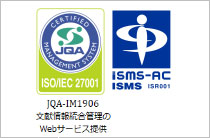ホームIMICライブラリMMWR抄訳2016年(Vol.65)民間医療保険の契約変更後におけるオピオイド処方の減・・・
2016/10/21Vol. 65 / No. 41
MMWR65(41):1125-1131
Declines in Opioid Prescribing After a Private Insurer Policy Change — Massachusetts, 2011–2015
民間医療保険の契約変更後におけるオピオイド処方の減少 ― マサチューセッツ州、2011~2015年
アメリカではオピオイド鎮痛薬関連の過剰摂取死が急増している。マサチューセッツ州では、ヘロインを含むオピオイド関連死が2012年から2013年にかけて45%増加し、2014年には10万人あたり20.0件と全米平均の2.5倍近くにまで達した。Blue Cross Blue Shield of Massachusetts (BCBSMA)は、同州にて約280万人と契約する州最大の医療保険会社である。2012年、BCBSMAが2011年の薬局におけるオピオイド鎮痛薬処方の保険請求について解析した結果、約3万人が30日分以上の短時間作用性オピオイドを新規に処方され、そのうち25%は複数の医療機関から処方を受けていた。この結果を受け、BCBSMAは2012年7月1日、オピオイドの新規処方にあたり患者および医師の同意、BCBSMAによる事前承認、用量の制限等を定めた処方オピオイド鎮痛薬使用プログラムを開始した。CDCは、BCBSMAの保険請求データを解析し、2011年7月1日~2012年6月30日をプログラム実施前期間、2012年7月1日~2015年6月30日を実施後期間として本プログラムの効果を評価した。解析期間中、月平均約150万人が薬剤処方の給付を受けた。月ごとの全オピオイド鎮痛薬処方率は、プログラム実施前後で1,000人あたり34件から29件へ14.7%低下した。長時間作用性オピオイドの処方率は、プログラム実施前後とも1,000人あたり3件と変化がなかったが、短時間作用性オピオイドは1,000人あたり31件から26件へ16.1%低下した。同様に、全契約者における長時間作用性オピオイド処方者の割合は0.24%から0.22%へ8.3%低下し、短時間作用性オピオイドは2.49%から2.17%へ12.9%低下した。分割時系列分析の結果、プログラム実施前後で、契約者における短時間および長時間作用性オピオイド処方者の割合および処方率ともに年率にして6~9%低下した。これらの数値差は全て統計的に有意であり、プログラム導入後3年間で約2,100万回分のオピオイド鎮痛薬処方が減少したと推定された。公的および民間医療保険会社は同様なプログラムの策定により、契約者の鎮痛薬依存や乱用リスクの低減が可能であると考えられる。
References
- Rudd RA, Aleshire N, Zibbell JE, Gladden RM. Increases in drug and opioid overdose deaths—United States, 2000–2014. MMWR Morb Mortal Wkly Rep 2016;64:1378–82. <http://dx.doi.org/10.15585/mmwr.mm6450a3>
- Substance Abuse and Mental Health Services Administration. Results from the 2012 National Survey on Drug Use and Health: summary of national findings. NSDUH Series H-46. Rockville, MD: US Department of Health and Human Services, Substance Abuse and Mental Health Services Administration; 2013.
- National Center for Health Statistics. Multiple cause of death, 1999–2014. US Department of Health and Human Services, CDC, National Center for Health Statistics. <https://wonder.cdc.gov/mcd-icd10.html>
- Massachusetts Department of Public Health. Data brief: opioid-related overdose deaths among Massachusetts residents. August 2016. Boston, MA: Massachusetts Department of Public Health; 2016. <http://www.mass.gov/eohhs/docs/dph/quality/drugcontrol/county-level-pmp/opioid-related-overdose-deaths-among-ma-residents-august-2016.pdf>
- Dowell D, Haegerich TM, Chou R. CDC guideline for prescribing opioids for chronic pain—United States, 2016. MMWR Recomm Rep 2016;65(No. RR-1). <http://dx.doi.org/10.15585/mmwr.rr6501e1>
- LaPensee KT. LaPensee. Analysis of a prescription drug prior authorization program in a Medicaid health maintenance organization. J Manag Care Pharm 2003;9:36–44. <http://dx.doi.org/10.18553/jmcp.2003.9.1.36>
- Massachusetts Department of Public Health. Response to the Massachusetts opioid prescription drug epidemic. 2014 report of best practices. Boston, MA: Massachusetts Department of Public Health; 2015. <http://www.mass.gov/eohhs/docs/dph/quality/drugcontrol/best-practices/best-practices-workgroup-report.pdf>
- Jones CM, Lurie PG, Throckmorton DC. Effect of US Drug Enforcement Administration’s rescheduling of hydrocodone combination analgesic products on opioid analgesic prescribing. JAMA Intern Med 2016;176:399–42. <http://dx.doi.org/10.1001/jamainternmed.2015.7799>
- Johnson H, Paulozzi L, Porucznik C, Mack K, Herter B; Hal Johnson Consulting; Division of Disease Control and Health Promotion, Florida Department of Health. Decline in drug overdose deaths after state policy changes—Florida, 2010–2012. MMWR Morb Mortal Wkly Rep 2014;63:569–74.
- US Department of Health and Human Services. ASPE issue brief. Opioid abuse in the U.S. and HHS actions to address opioid-drug related overdoses and deaths. March 26, 2015. Washington, DC: US Department of Health and Human Services; 2015. <https://aspe.hhs.gov/basic-report/opioid-abuse-us-and-hhs-actions-address-opioid-drug-related-overdoses-and-deaths>
Copyright © 2013 International Medical Information Center. All Rights Reserved.












